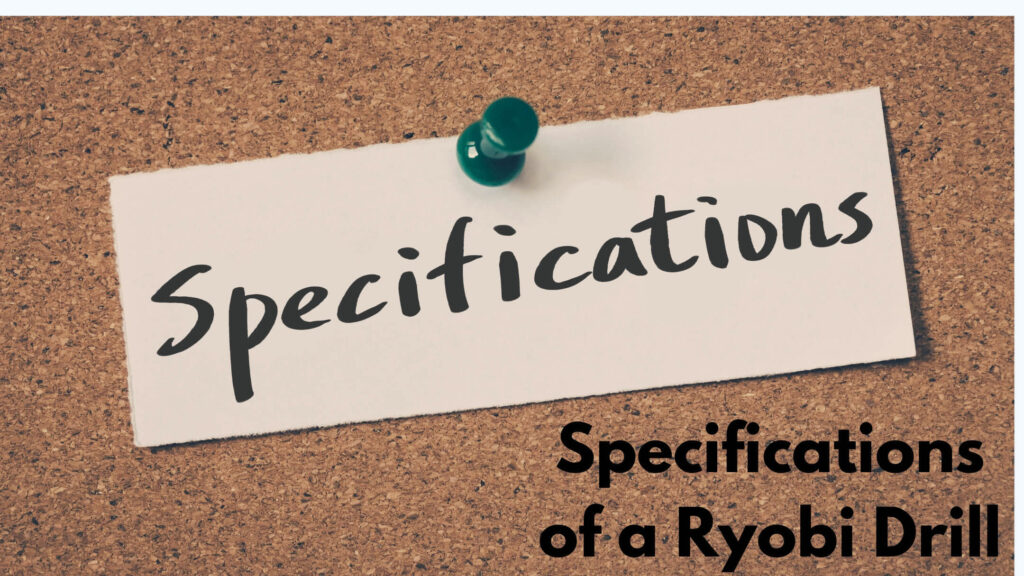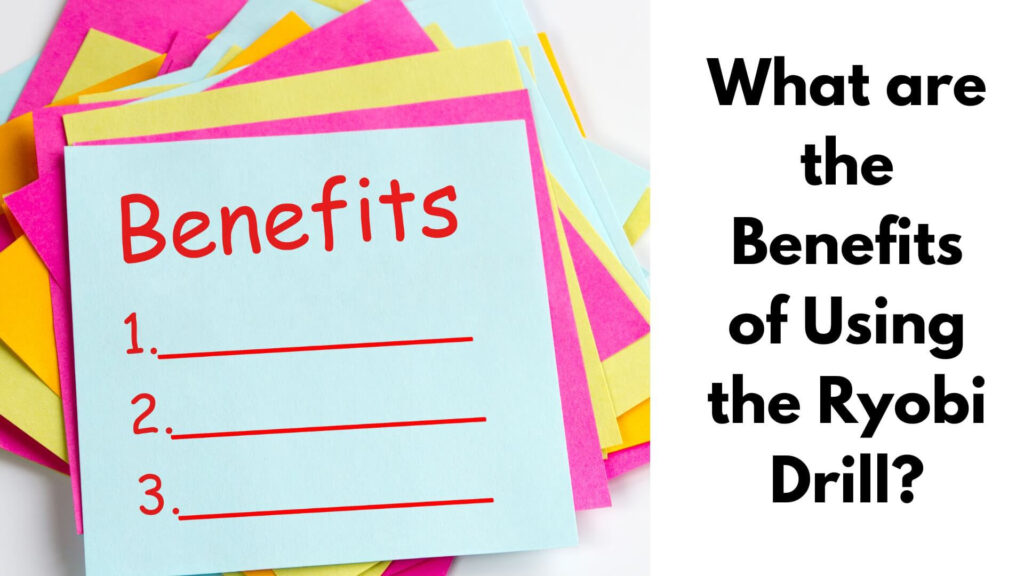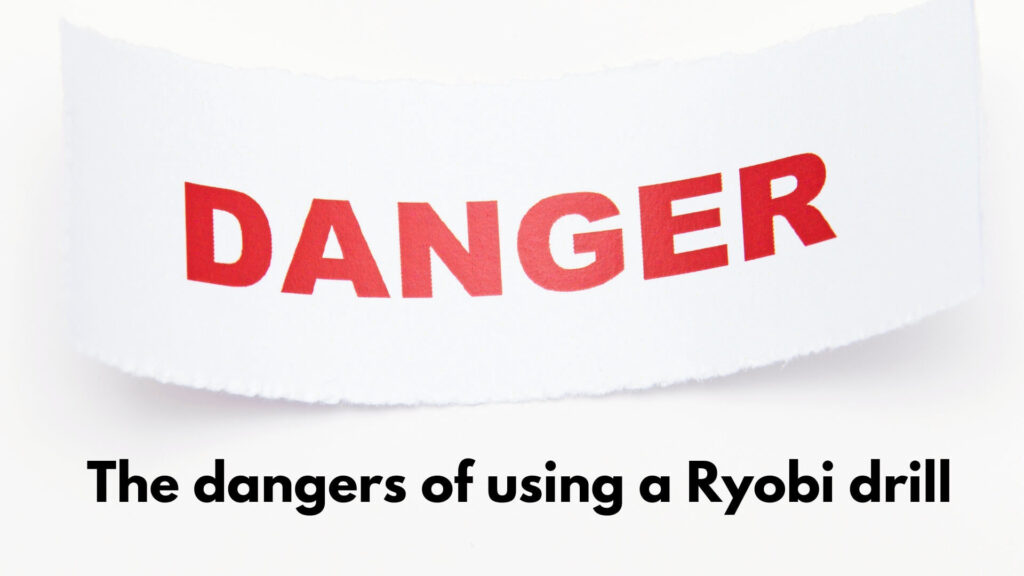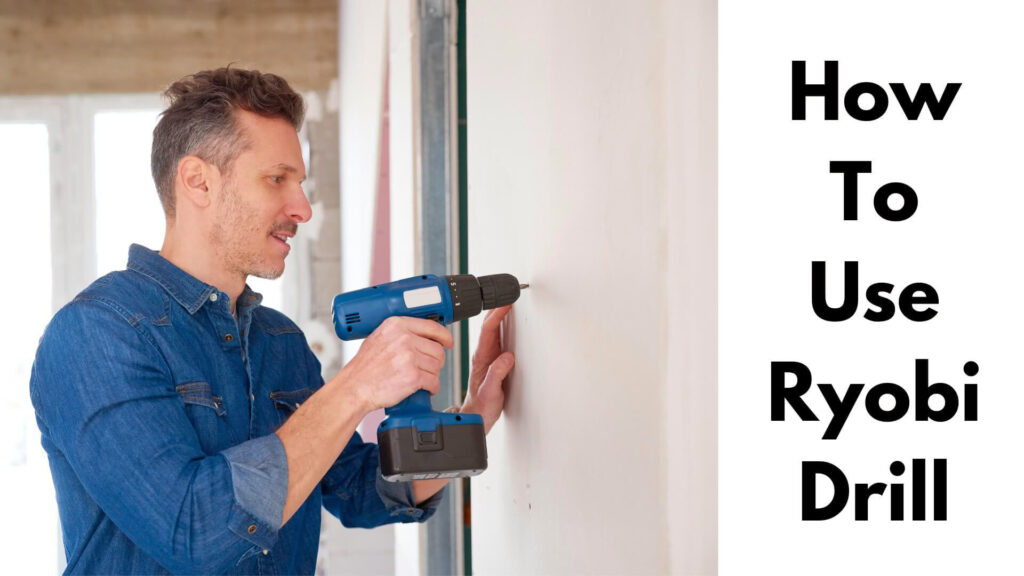Whether you’re a DIY enthusiast or a professional, the Ryobi drill offers versatility, reliability, and ease of use. In this complete guide, we will walk you through everything you need to know to get the most out of your Ryobi drill, from safety precautions to specific applications like construction, mining, and using the drill as a screwdriver.
Table of Contents
What is a Ryobi drill?
A Ryobi drill is a power tool produced by Ryobi Limited, a leading manufacturer known for making affordable, durable, and user-friendly equipment. Ryobi drills are widely recognized for their cordless convenience and come in various models, including regular power drills, hammer drills, and impact drills. These tools are ideal for homeowners, DIYers, and even professionals in various fields, from woodworking to construction.
Ryobi drills are designed to be easy to use, with features like variable speed settings, reversible rotation, and ergonomic handles. Depending on the model, they also come with additional features like LED lights, quick-charge batteries, and brushless motors for enhanced efficiency.
How to use a Ryobi drill Safely?
Before using your Ryobi drill, it’s crucial to understand the basic safety precautions. Power tools can be dangerous if handled incorrectly, so adhering to these guidelines will minimize risk and ensure a smooth experience.
1: Wear Protective Gear:
Always wear the appropriate safety gear when operating a Ryobi drill. Protective eyewear is a must to guard against flying debris, and hearing protection can reduce noise-related damage. If you’re drilling into metal, consider wearing gloves, but make sure they don’t interfere with the drill’s controls.
2: Check Your Work Area:
Ensure that your work area is clean, well-lit, and free from hazards like flammable materials. Avoid working in wet environments unless your Ryobi drill is rated for water exposure, as moisture could lead to electric shock or malfunction.
3: Use the Right Bit:
Choose the correct drill bit for the material you’re working with. For example, use masonry bits for concrete and brick, and wood bits for timber. The wrong bit can not only damage your workpiece but also potentially harm your drill.
4: Secure the Material:
Always secure the material you’re drilling into with a clamp or vise to prevent it from moving. This will improve accuracy and prevent accidents.
5: Avoid Loose Clothing:
Loose clothing or long jewelry can get caught in the moving parts of the drill, leading to injuries. Wear fitted clothes, and if you have long hair, tie it back.
6: Inspect the Drill:
Before use, inspect your Ryobi drill to ensure everything is in good working order. Check the battery charge, inspect the drill bit for wear, and ensure that all components are securely attached.
Read More: How to Use an Impact Drill?
Specifications of a Ryobi drill

A typical Ryobi drill, particularly from the Ryobi ONE+ 18V series, offers the following detailed specifications:
- Power Source: Powered by an 18V Lithium-Ion battery, commonly used across the Ryobi ONE+ system, providing portability and convenience. Battery capacity ranges from 1.5Ah to 5.0Ah, offering varying levels of runtime and power based on user needs.
- Torque: Models vary in torque output, typically between 400 to 750 in-lbs, making them suitable for light to medium-duty tasks like driving screws or drilling into wood, metal, and masonry (depending on the specific model).
- Speed: Most Ryobi drills feature two-speed settings:
- Low Speed: 0-450 RPM, ideal for tasks requiring more control and precision, such as driving screws.
- High Speed: 0-1,700 RPM, useful for faster drilling through materials like wood or metal.
- Chuck Size: Equipped with a 1/2-inch keyless chuck, allowing easy bit changes without the need for additional tools, accommodating a wide variety of drill bits.
- Motor Type: Ryobi drills come with both brushed and brushless motor options. Brushless motors provide greater efficiency, longer lifespan, and higher performance, particularly in the premium models.
- Clutch Settings: With 24+ clutch settings, Ryobi drills allow for precise control over the torque applied, preventing damage to materials and ensuring the right amount of force for different tasks.
- Additional Features:
- LED Work Light: Integrated LED lights to illuminate the workspace, useful in dim or enclosed areas.
- Reversible Function: Enables forward and reverse drilling, useful for both drilling and removing screws.
- Magnetic Bit Holder: Some models feature a magnetic tray for conveniently storing screws and bits during use.
- Weight: Typically weighs between 3 to 4.5 lbs, including the battery, making it lightweight and easy to handle for prolonged periods of use.
- Battery Compatibility: Ryobi drills are part of the ONE+ system, meaning the battery is compatible with over 100+ Ryobi tools, enhancing versatility and convenience.
These specifications make Ryobi drills a great option for both DIY enthusiasts and professionals, offering reliability, power, and ease of use for a wide range of applications.
What are the Benefits of Using the Ryobi Drill?

Ryobi drills offer several advantages, making them a go-to choice for beginners and professionals alike.
- Affordability: Ryobi drills are competitively priced, offering quality performance without breaking the bank.
- Durability: Built to last, Ryobi tools are known for their long lifespan even under frequent use.
- Cordless Convenience: Many Ryobi drills are cordless, giving you flexibility and freedom of movement without worrying about power outlets or cords.
- Versatility: With various models, Ryobi offers specialized drills for construction, woodwork, and even mining.
- Interchangeable Batteries: Ryobi’s One+ battery system allows you to use one battery for multiple Ryobi tools, making your toolkit more efficient.
Read More: How to Use Magnetic Drill Press?
How to Use the Ryobi Drill for Mining?
Mining, especially in small-scale operations or hobbyist mining, often involves drilling into rock and minerals. A Ryobi hammer drill or impact drill is ideal for these applications.
- Step 1: Choose a powerful Ryobi model, preferably with a hammer function, as it delivers impact force for drilling through rock.
- Step 2: Use masonry or specialized mining bits designed for hard surfaces like stone and ore.
- Step 3: Set the drill to a slow speed to ensure precision and control.
- Step 4: Drill with a consistent and firm pressure, but avoid forcing the bit, as this can lead to overheating.
Read More: How to Change Drill Bit on Ryobi?
How to Use the Ryobi Drill for Construction?

Ryobi drills are frequently used in construction for tasks like drilling holes in walls, screwing, and fastening materials.
- Step 1: Choose the appropriate drill bit based on the material—whether it’s wood, metal, or concrete.
- Step 2: Ensure your battery is fully charged to avoid disruptions in your workflow.
- Step 3: If drilling into concrete, use a hammer drill setting for more efficient results.
- Step 4: Secure your workpiece, and apply steady, controlled pressure.
How to use a Ryobi cordless drill?
The cordless drill is one of Ryobi’s most popular tools due to its convenience.
- Step 1: Charge the battery fully before beginning any project.
- Step 2: Insert the correct bit and tighten it using the chuck.
- Step 3: Adjust the torque setting according to the material you’re working with (lower torque for soft materials, higher for harder ones).
- Step 4: Start drilling at a low speed, and increase as needed.
How to use a Ryobi hammer drill?
A Ryobi hammer drill is perfect for drilling into harder surfaces like brick, stone, and concrete.
- Step 1: Select a masonry bit compatible with your material.
- Step 2: Set the drill to “hammer” mode, which adds percussive force to the drilling motion.
- Step 3: Hold the drill steady and apply firm, even pressure to avoid damaging the bit or the surface.
- Step 4: Make sure to periodically pull back the bit to clear out dust.
How to use a Ryobi power drill?
For general drilling tasks, a Ryobi power drill is your go-to option.
Step 3: Align the drill bit with your marked point, apply pressure, and start drilling.
Step 1: Install the correct drill bit for your material.
Step 2: Adjust the speed settings to match your task. Use lower speeds for driving screws and higher speeds for drilling.
How to use a Ryobi impact drill?
A Ryobi impact drill is specifically designed for driving screws and bolts into tough materials.
- Step 1: Insert a driver bit rather than a drill bit.
- Step 2: Set the drill to the “impact” setting.
- Step 3: Hold the tool firmly as it delivers quick bursts of rotational force to drive the screw into the material.
- Step 4: Apply consistent pressure until the screw is fully seated.
How to use the old Ryobi drill?
Older Ryobi drills might lack some modern features, but they still deliver effective performance.
- Step 1: If using an older cordless model, ensure the battery holds a charge.
- Step 2: Check the chuck and tightening mechanism, as older drills might require manual chuck keys.
- Step 3: Follow the same general safety and operation procedures as with newer models.
How to use the Ryobi drill as a screwdriver?
Ryobi drills can easily double as screwdrivers for fastening jobs.
Step 3: Align the bit with the screw head and slowly engage the trigger, driving the screw in with controlled pressure.
Step 1: Insert the correct screwdriver bit into the chuck.
Step 2: Set the torque to a low setting to avoid overdriving the screws.
The dangers of using a Ryobi drill

While Ryobi drills are safe when used correctly, improper use can lead to accidents. Common dangers include:
- Overheating: Excessive use or using the wrong bit can cause the drill to overheat, potentially damaging the motor.
- Electric Shock: Using a drill in wet environments can lead to electric shock if the tool is not waterproof.
- Injury from Flying Debris: When drilling into hard materials, flying particles can cause eye or skin injuries. Always wear protective gear.
- Tool Kickback: If the drill bit binds, the tool can kick back toward you, potentially causing injury.
Frequently Asked Questions.
What kind of drill does Ryobi sell?
Ryobi sells a range of drills including cordless drills, hammer drills, impact drills, and power drills. Many models are part of the Ryobi One+ system, which allows for interchangeable batteries across different tools.
Is it safe to use a Ryobi drill?
Yes, Ryobi drills are safe when used properly and in accordance with the manufacturer’s guidelines. Always follow basic safety precautions, such as wearing protective gear and securing the workpiece.
Do I need to have a Ryobi drill charger?
If you’re using a cordless Ryobi drill, you will need a compatible Ryobi charger to recharge the battery. Many Ryobi drill kits come with a charger, but if you purchase a tool-only package, you’ll need to buy a charger separately.
How do I tighten the drill bit?
To tighten the drill bit on a Ryobi drill, hold the chuck (the part that holds the bit) in place and turn it clockwise until the bit is secure. Some older models may require a chuck key for tightening.
Conclusion
Ryobi drills are versatile, durable, and easy to use, making them a fantastic choice for both beginners and professionals. Whether you’re tackling DIY projects at home, working on construction sites, or even doing small-scale mining, Ryobi drills are up to the task. Always prioritize safety, choose the right bit for the job, and make sure your tool is in good working condition. With this comprehensive guide, you’re now ready to make the most of your Ryobi drill for any task at hand!

Hey, I am MD Hrithik Hossain, I’m a huge fan of DIY crafts. My workshop is where I spend most of my spare time, and I’m always working on some project. To that end, I’d like to share some of my knowledge and experience with you in power tools, woodworking, and other specialized materials fabrication.
I will guide you with genuine knowledge that can assist you with deciding whether a drill is appropriate according to your requirements or not. If you want to find the best drill and know which type of drill is most suited for your needs, then I can guide you with my expertise. My passion lies in helping others find the correct products they need at an affordable price.


